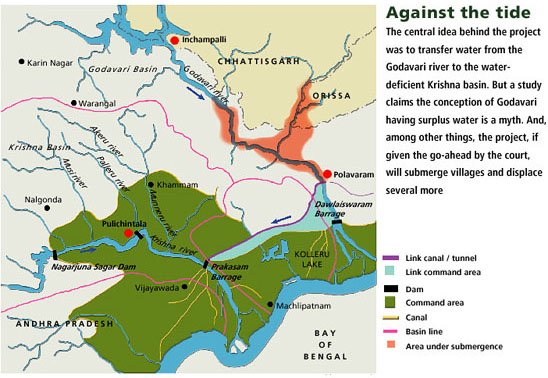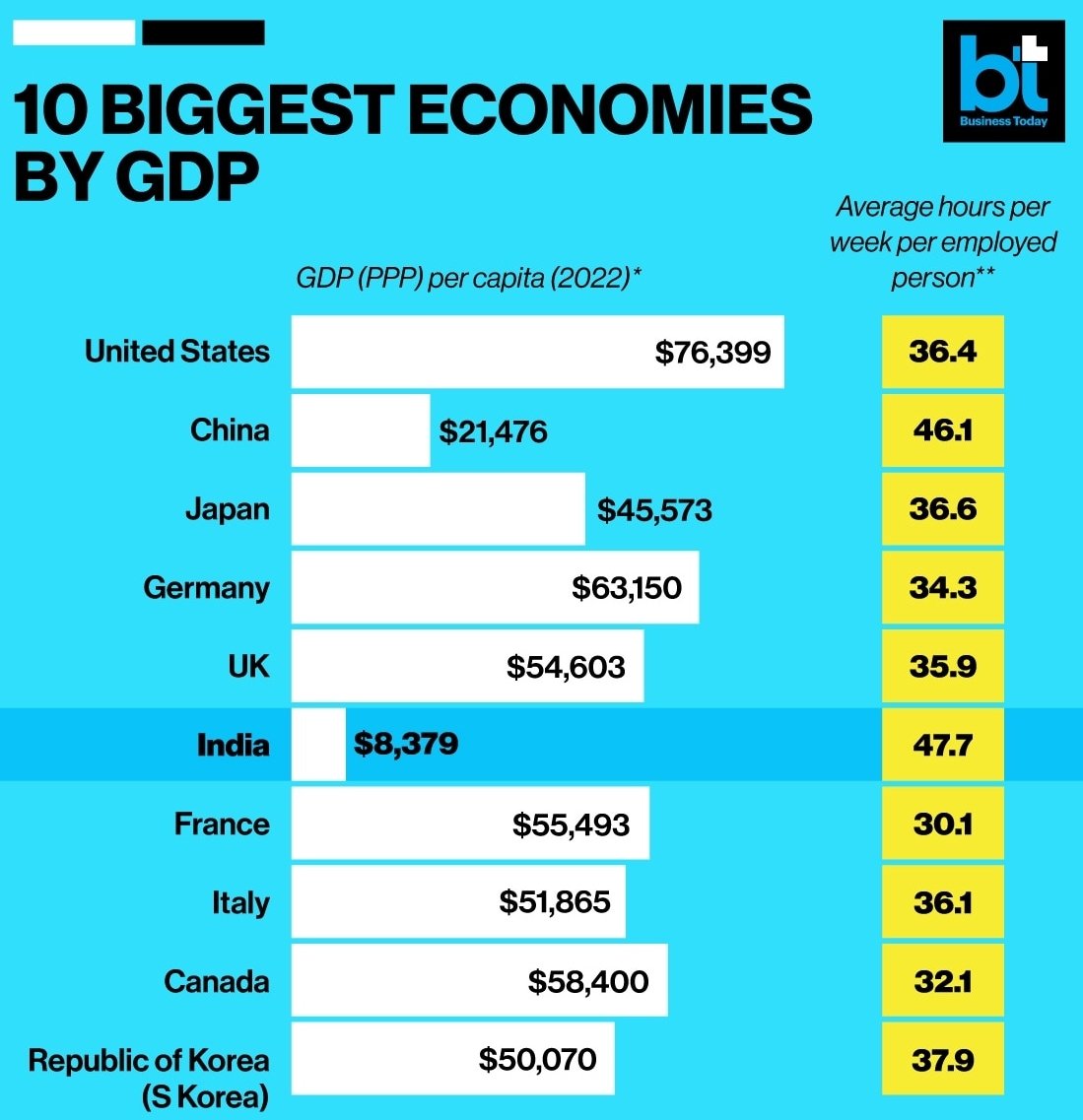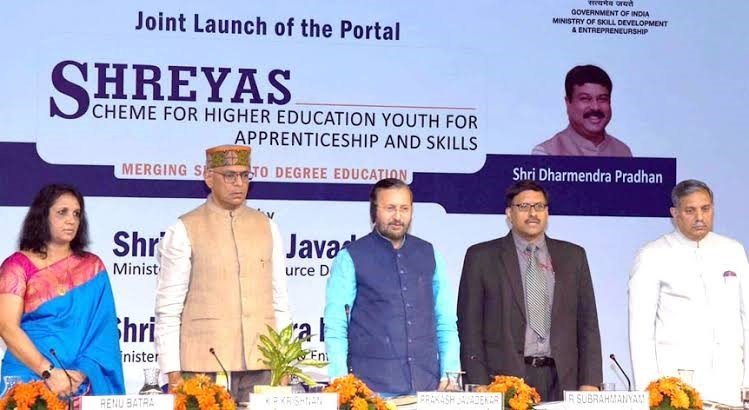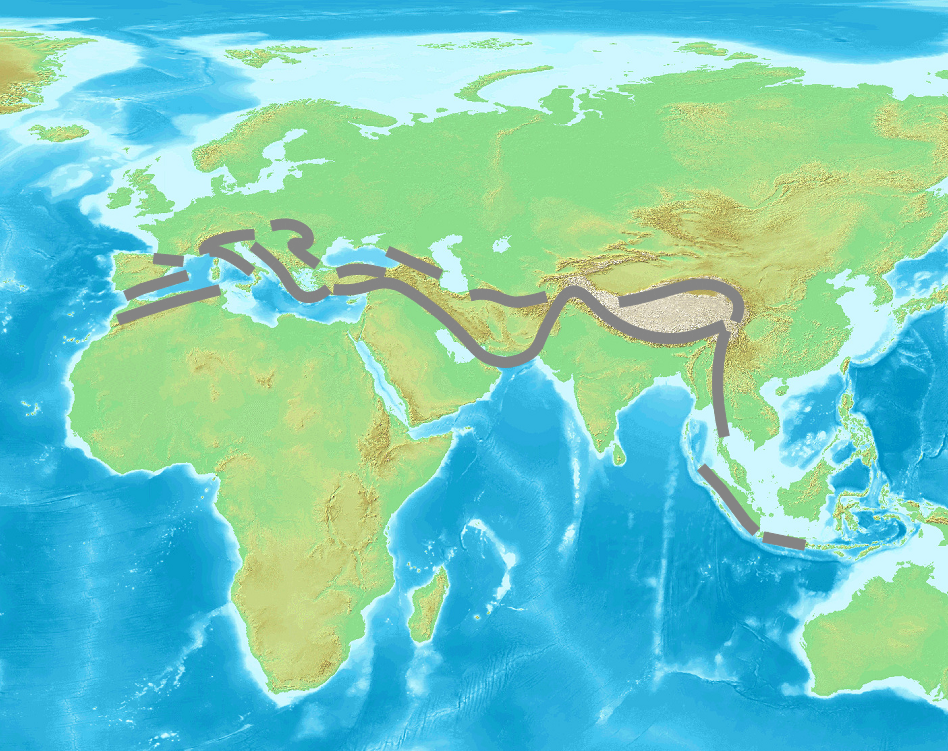
Current Affairs for UPSC Civil Services Exam – April 06, 2024
Subscribers of "Current Affairs" course can Download Daily Current Affairs in PDF/DOC
Subscribe to Never Miss an Important Update! Assured Discounts on New Products!
Must Join PMF IAS Telegram Channel & PMF IAS History Telegram Channel
{GS2 – IR – Groupings} NATO at 75
- Context (IE): NATO completed 75 years of formation.
History of NATO
- Founded on April 4, 1949.
- 12 founding members: Belgium, Canada, Denmark, France, Iceland, Italy, Luxembourg, the Netherlands, Norway, Portugal, the United Kingdom and the United States.
- Formed by the signing of the Washington Treaty, which is based on Article 51 of the United Nations Charter, “which reaffirms the right of individual or collective defence.”
- Article 5 of Washington Treaty explicitly aims to counter Soviet Union’s influence in Eastern Europe.
- Direct Military interventions are not a must, dependent as individual member deems fit.
- The only time the article has been invoked so far was following the 9/11 attacks on the US.
- In the aftermath of it, NATO forces were sent to Afghanistan and deployed for nearly 20 years.

For more details, visit > NATO
NATO in today’s world
- Expanded membership: Maximum in history (32 members) Making it bigger and stronger. Finland (2023) and Sweden (2024), who had historically neutral foreign policy, are now NATO members.
- Russia-Ukraine war: Insecurities of war led to a more united NATO.
- Relations with Russia have now “slipped to the level of direct confrontation“.
- Rise of China: A news relevance to counter it not only economically but ideologically and strategically.
Contemporary challenges being faced by NATO
- Disagreements on military spending: US supports a hike in spending while many members are not in support. Only 11 out of the 30 members (2014) spent over the agreed limit of 2 per cent of their GDP.
- Membership delay: Despite a liberal “open door” policy for membership, all members must ratify a new applicant’s entry. Yet individual members stall new entries, for example, Sweden and Finland case.
- Intra-block tensions: The French President commented on a lack of strategic coordination between European allies and the United States and Turkey.
- Ukraine-Russia war funding: The plan to create a five-year, $107 billion fund for Ukraine drew mixed reactions from members.
Learn more on NATO Plus.
{GS2 – IR – Middle East} India abstains from Gaza resolutions
- Context (TH): India abstained on a resolution at the UN Human Rights Council (UNHRC) that called on Israel for an immediate ceasefire in Gaza and called on states to implement an arms embargo.
- Resolution was adopted by the 47-member UNHRC.
- Pakistan introduced all four resolutions on behalf of the Organisation for Islamic Cooperation.
- India’s abstention is in line with previous votes on HRC resolutions that call for “accountability”.
- India favoured three other resolutions that criticised Israel for human rights violations against Palestinians and Israel’s occupation of the Syrian Golan and called for the Palestinian right to self-determination.
- Countries against the resolution: United States, Germany and four other countries.
- Countries favoured resolution: 28 countries, including Bangladesh, China, Maldives, the UAE, Indonesia, Brazil and South Africa.
- Israeli response: Criticised it for its failure to mention Hamas and condemn the October 7 attacks.
- The final resolution demands that Israel “immediately lift its illegal blockade on the Gaza Strip, “immediate ceasefire” in Gaza, condemned Israeli actions that “may amount to ethnic cleansing”.
{GS3 – DM – Earthquakes} Taiwan Story: Earthquake Resistant Construction
- Context (HT): Ten people died, and hundreds were injured in a 7.4 magnitude earthquake that hit Taiwan‘s east coast on April 3.
- Despite significant damage to buildings, Taipei 101, the country’s iconic skyscraper, remained unaffected.

Earthquake-resistant construction techniques
- Taiwan has a history of devastating earthquakes, with a deadly quake in 1999 that killed thousands and destroyed numerous buildings.
- Since then, Taiwan has implemented stricter building codes focusing on quake-resistant construction techniques.
- The number of buildings with seismic features increased significantly from 2009 to 2022, highlighting Taiwan’s commitment to safety.
- Taiwan’s building codes have integrated seismic requirements to ensure structures can withstand earthquakes. For example, Taipei 101.
- Taipei 101’s resilience can be attributed to its construction materials, including flexible and sturdy concrete and steel.
- The building rests on deep foundations supported by reinforced concrete and steel piles drilled into the bedrock.
- Outer mega-columns are connected to core via robust steel outrigger trusses, enhancing stability.
- Taipei 101’s stability is enhanced by a mass damper (a spherical device) suspended between floors.
- It is a massive 660-ton golden steel sphere suspended within the tower.
- This pendulum-like device is designed to counteract the building’s swaying during seismic activity, absorbing kinetic energy and reducing movement by up to 40%.
Way Forward
- Approximately 59% of India’s land area is susceptible to earthquakes of varying intensities.
- India needs to adopt the best practices from Taiwan to make the country earthquake-resilient.
To know Why Taiwan is more prone to earthquakes, Visit > Pacific Ring of Fire.
{GS3 – Envi – Conservation} Geoengineering
- Context (DTE): The need for geoengineering.
- Climate engineering, also known as geoengineering, sunlight reduction methods or solar climate intervention, refers to a broad set of methods and technologies that aim to deliberately alter the climate system in order to alleviate the impacts of climate change.
- It was first introduced in the 1830s with proposals to sow clouds to stimulate rain and, later, to modify the path of hurricanes by seeding them with silver iodide.
Methods of Geoengineering
Carbon Dioxide Removal (CDR)
- It aims at removing atmospheric CO2 and storing it in geological, terrestrial, or oceanic reservoirs.
Methods
Bioenergy with Carbon Capture and Storage (BECCS)
- BECCS is the combination of biomass used to generate bioenergy, with CCS to prevent emissions reaching the atmosphere.
- It can provide net atmospheric CO2 removals, unlike the application of CCS on fossil infrastructure.

- Risks associated with BECCS:
- Land competition between biomass production and agriculture, freshwater use and phosphorous for fertilizer,
- Destruction of natural ecosystems for biomass production,
- Consequent diminishing of biodiversity and vital ecosystem services.
- Biomass plantations can also be invasive monoculture crops, which further harm local biodiversity and displace existing ecosystem.
Direct Air Capture with Carbon Capture and Storage (DACCS)
- DACCS combines CCS with chemical processes to capture CO2 from ambient air, which is then stored underground.
- Storage in geological reservoirs or in mineral forms would remove CO2 for up to 1000 years.

Enhanced Weathering (EW)
- It removes atmospheric CO2 by spreading small particles of ground silicate and carbonate rock onto soils, coasts or oceans.
- Rocks containing silicate and carbonate naturally absorb CO2, yet over very slow (geological) timescales.
- By spreading small particles of silicate and carbonate, EW increases the total surface area of the planet that experiences this weathering effect and encourages weathering on surfaces.

- Risks associated:
- Worsened air quality from rock dust spread onto soil
- Degradation of local water quality.
Ocean Fertilization
- It aims to increase the rate at which the ocean draws down atmospheric CO2 and sequesters it in the deep oceans through the growth of phytoplankton.

Solar Radiation Management (SRM)
- It aims to reflect some sunlight and heat back into space by increasing the reflectivity of the earth’s surface or injecting aerosols into the stratosphere.
Methods
Stratospheric Aerosol Interventions (SAI)
- SAI involves the injection of gas in the stratosphere, which converts into aerosols that block some incoming solar radiation.
- IPCC Special Report considered SAI as a fast-acting method to immediately mask climate impacts during a period of emissions “overshoot”, which would increase the time available for mitigation to lower atmospheric CO2 concentrations.

- Risks associated:
- Changing precipitation patterns and air circulation,
- Adverse impacts on monsoon areas in particular, harming agriculture and many ecosystem types.
- Disrupting the chemistry of the stratosphere,
- Affects the length of time of methane storage, the formation of ice, and microphysics of clouds.
Marine Cloud Brightening (MCB)
- It involves spraying sea salt or similar particles into marine clouds, increasing their reflectivity and blocking some incoming solar radiation.
- Risks associated:
- Affect regional rainfall patterns.
- Reduce the intensity of hurricanes.
- Likelihood of minor crop failures.
Cirrus Cloud Thinning
- It seeks to reduce the thickness of ice clouds 4-8 miles (6-13 kilometers) above Earth’s surface.
- Cirrus clouds tend to trap more heat in the atmosphere than they reflect back to space.
- Thinning these clouds could allow more heat to escape from Earth’s atmosphere, producing a cooling effect.
Ethical Desirability of Geoengineering
Distributive justice
- Distributive justice deals with the distribution of goods in society and the norms on how harms and benefits ought to be shared among persons.
- Climate engineering changes the distribution of mitigation across generations, potentially pushing more mitigation onto future generations, coupled with a greater reliance upon CE.
- Greater reliance may unfairly burden future generations with higher decarbonisation costs and higher risks of unjust side effects.
- E.g. When SAI is applied for realising temperature change, termination of the deployment could ‘produce warming rates up to five times greater than the maximum rates under the business-as-usual CO2 scenarios’
- Another aspect of justice is around carbon capture and storage. This is cited as neocolonialism, where humans compensate for their own emissions by pushing people off their lands who are now using the lands for agriculture or their subsistence.
Procedural justice
- Procedural justice challenges appear significant at the implementation stage, where the demands of procedural fairness and stakeholder involvement influence choices about where to implement a particular technique, under what socio-economic regimes or conditions, and at what time.
- The conventional practice of obtaining representative consent looks impractical in a technology with global impact.
Intergenerational justice
- The paradoxical issue in geoengineering is that future generations are forced to bear the brunt of the harm caused by the unnatural ways followed by the current generation.
- This is often termed the risk-transfer argument or responsibility abdication objection.
Moral Corruption
- The availability of CE may encourage self-serving rationalisations among the present generation that they do not need to mitigate more rapidly now.
- It presents the present generation with the possibility of delaying near-term mitigation and “passing the buck” of mitigation onto future generations with greater economic burdens.
{GS3 – Envi – Conservation} Plankton Crash
- Context (TH): The NGT panel linked the red tide of Promenade Beach to the PLankton crash.
- Earlier, it was believed that red tide was caused by the discharge of dye from industries nearby.
- Plankton crash is a decline in the population of microorganisms (plankton).
- Analysis indicated a predominance of noctiluca scintillans, a type of phytoplankton.
- The conditions were right for a quick gathering. This plankton turns red when in large numbers.
- However, a later decline (crash) led to the release of coloured pigments from their cells.
- These pigments then stick to rocks and the sea floor, forming a biofilm-like layer and causing ‘red tides’.
- Analysis shows high Iron levels, which promotes plankton growth in the absence of enriched nutrients.
{GS3 – IE – Banking} RBI Introduces two new UPI Features
- Context (LM| TOI | TH): The RBI Governor announced two new features for Unified Payments Interface (UPI) users during the monetary policy statement.
- Firstly, the RBI proposes allowing third-party UPI apps for UPI payments from PPI wallets, enhancing convenience and digital payment adoption.
- Currently, UPI payments from Prepaid Payment Instruments (PPIs) are limited to the issuer’s web or mobile apps.
- Individuals can now use PPIs like digital wallets to make UPI payments via third-party apps.
- This fosters interoperability among PPI wallets, akin to bank accounts, facilitating seamless transactions.
- Fintech specialists believe this advancement will elevate PPIs to the level of bank accounts for UPI transactions via third-party apps.
- Secondly, the RBI has proposed to enable UPI for cash deposit facility.
- Customers can soon deposit cash at CDMs using the UPI app, eliminating the need for a debit card.
- This cardless procedure simplifies banking transactions, making them akin to UPI payments.
- The introduction of these UPI features signifies a significant stride in digital payment innovation.
- They promote financial inclusivity, convenience, and efficiency, aligning with India’s vision of a digital economy.
Prepaid Payment Instruments
- PPIs are instruments that facilitate the purchase of goods and services, the conduct of financial services, the enabling of remittance facilities, etc., against the value stored therein.
- Banks and non-banks can issue PPIs.
- Banks can issue PPIs after obtaining approval from RBI.
- Non-bank PPI issuers can operate a payment system to issue PPIs to individuals/organisations after receiving authorisation from RBI.
Types of PPIs

{GS3 – IE – Inflation} Food Inflation still a cause of concern
- Conext (TH | IE): The Monetary Policy Committee decided to keep the policy repo rate unchanged at 6.50% as of April 5, 2024. This marks the seventh consecutive time rates have remained steady.
- The MPC also decided to remain focused on the withdrawal of accommodation to ensure that inflation progressively aligns with the target while supporting growth.
- The RBI has indicated that headline inflation will moderate in the coming months, aided by a favourable base effect lasting until July 2024.
Key Highlights
- Overall inflation has been somewhat controlled, dropping to 5.1% in January and February 2024.
- Core inflation has also decreased steadily over nine months to its lowest level in the series.
- The fuel component of the CPI stayed in deflation for six consecutive months, but food inflation pressures intensified in February.
- For 2024-25, assuming a normal monsoon, CPI inflation is projected at 4.5%.
- The central bank has retained GDP growth at 7% and retail inflation at 4.5 % for fiscal 2024-25.
Food Inflation is a concern
- Food inflation has been volatile, reaching 7.8% in February 2024.
- Sustained inflationary trends in nonperishable food categories, such as pulses and spices, raise concerns.
- Factors driving food inflation change frequently.
- The concern is to prevent spillover effects to the rest of the Consumer Price Index (CPI).
Challenges in Inflation control
- Geopolitical tensions.
- Volatility in international financial markets.
- Geo-economic fragmentation.
- Adverse climate shocks.
Measuring Food Inflation in IndiaConsumer Food Price Index (CFPI)
WPI food index
Global Food Price Index
Base Effect
|
To know more about Food Inflation in India, Visit > Deglobalisation of Food Inflation
{GS3 – S&T – Space} Dark Energy Spectroscopic Instrument (DESI)
- Context (IE): An international team of researchers has unveiled the most detailed three-dimensional map of the universe.
- The map is created using observations from the Dark Energy Spectroscopic Instrument (DESI), led by scientists from the Tata Institute of Fundamental Research, Mumbai.
- The map aims to shed light on dark energy, the mysterious force driving the universe‘s uncontrollable expansion.
- The concept of dark energy arises from the universe’s accelerated expansion, defying gravitational pull.
- Understanding dark energy is crucial for comprehending the universe’s origin, evolution, and fate.
What Exactly is Dark Energy?
- Right now, dark energy is just the name that astronomers gave to the mysterious “something” that is causing the universe to expand at an accelerated rate.
- Dark energy is the “evil counterpart” to gravity–an “anti-gravity” force providing a negative pressure that fills the universe and stretches the very fabric of spacetime.
- Dark energy is estimated to account for between around 68% to 72% of the universe’s total energy and matter.
Dark Energy Spectroscopic Instrument (DESI)

- It is a scientific research instrument for conducting spectrographic astronomical surveys of distant galaxies.
- The Lawrence Berkeley National Laboratory operates the instrument under funding from the US Department of Energy’s Office of Science.
- The DESI Survey is being conducted on Mayall 4-meter telescope at Kitt Peak National Observatory.
- DESI involves over 900 researchers worldwide, with the Tata Institute of Fundamental Research (TIFR) representing India.
- DESI is designed to measure the impact of dark energy.
- DESI observations will be used to create a 3D map of a huge volume of space that stretches more than 11 billion years into the past.
- The DESI project represents a significant leap in understanding the universe’s structure and dynamics.
{Prelims – In News} Juice Jacking
- Context (TH): The Reserve Bank of India (RBI) has issued a cautionary message to mobile phone users about juice jacking.
- The term “juice jacking” was first coined in 2011 by investigative journalist Brian Krebs.
- Juice jacking is a cyber attack in which a compromised Universal Serial Bus (USB) charging station transfers malware to or steals personal information from a connected device.
- Juice jacking, also known as port jacking, is not limited to cell phones but any device capable of being charged via USB plug.
- It is used to install malware, steal sensitive data (such as passwords and credit card information), or gain unauthorized access to the device.
- This type of attack has been a growing concern, with incidents reported in various public spaces such as airports, hotels, and shopping centres.
Mitigating risk
- Avoid Public USB Ports especially those found in public transportation hubs, airports, or other high-traffic areas as these are more susceptible to tampering.
- USB Data Blockers (USB Condoms): These small devices allow only power transfer while blocking data transfer through the USB cable.
- Use Power Outlets: Whenever possible, charge the devices directly from power outlets rather than relying on USB ports.
- Enable Data Transfer Prompt: On your device, disable automatic data transfer when connected via USB.
{Prelims – Sci – Bio – Diseases} Prostate Cancer
- Context (IE): According to the International Agency for Research on Cancer projections, prostate cancer incidence in India will double to about 71,000 new cases per year by 2040.
- The cases are projected to double from 1.4 million per year in 2020 to 2.9 million per year by 2040 worldwide, with low and middle-income countries predicted to see the highest increase.
Prostate Cancer
- When cancer starts in the prostate, it is called prostate cancer.
- Symptoms: Difficulty starting urination, weak or interrupted flow of urine, pain or burning during urination, blood in the urine or semen.
- It is the most common form of male cancer in more than half of the world’s countries.
- Prostate cancer accounts for three per cent of all cancers in India, with an estimated 33,000-42,000 new cases diagnosed annually.
Prostate
|





![PMF IAS Environment for UPSC 2022-23 [paperback] PMF IAS [Nov 30, 2021]…](https://pmfias.b-cdn.net/wp-content/uploads/2024/04/pmfiasenvironmentforupsc2022-23paperbackpmfiasnov302021.jpg)












